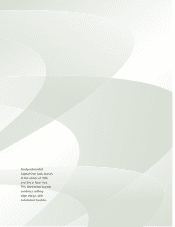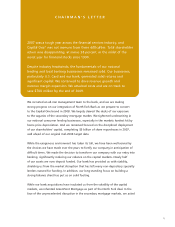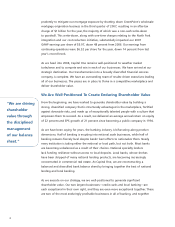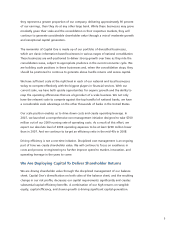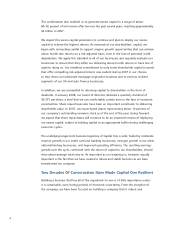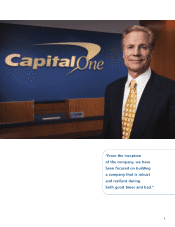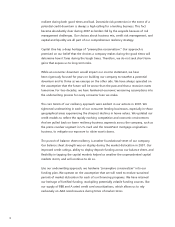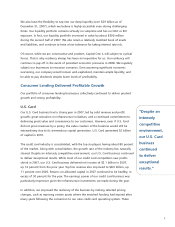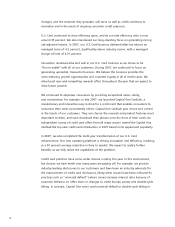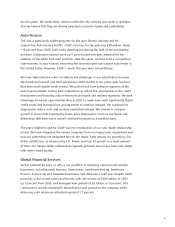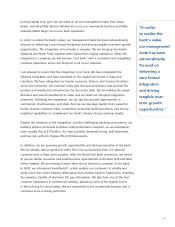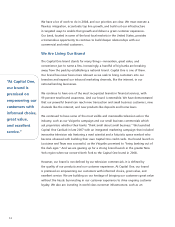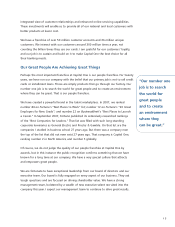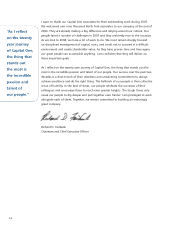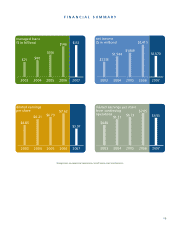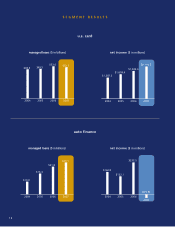Capital One 2007 Annual Report Download - page 8
Download and view the complete annual report
Please find page 8 of the 2007 Capital One annual report below. You can navigate through the pages in the report by either clicking on the pages listed below, or by using the keyword search tool below to find specific information within the annual report.
resilient during both good times and bad. Downside risk protection in the event of a
potential credit downturn is always a high calling for a lending business. This fact
became abundantly clear during 2007 as lenders fell by the wayside because of risk
management challenges. Our choices about business mix, credit risk management, and
capital and liquidity are all part of our comprehensive resiliency strategy.
Capital One has a deep heritage of “preemptive conservatism.” Our approach is
premised on our belief that the choices a company makes during the good times will
determine how it fares during the tough times. Therefore, we do not seek short-term
gains that expose us to long-term risks.
While an economic downturn would impact our income statement, we have
been rigorously focused for years on building our company to weather a potential
downturn and to thrive as we emerge on the other side. We have always operated on
the assumption that the future will be worse than the past and that a recession starts
tomorrow. For two decades, we have hardwired economic worsening assumptions into
the underwriting process for every consumer loan we make.
The core tenets of our resiliency approach were evident in our actions in 2007. We
tightened underwriting in each of our consumer lending businesses, especially in those
geographical areas experiencing the sharpest declines in home values. We updated our
credit models to reflect the rapidly evolving competitive and economic environment.
And we pulled back on lower resiliency business segments across the company, such as
the prime revolver segment in U.S. Card and the GreenPoint mortgage originations
business, to mitigate our exposure to riskier asset classes.
The pursuit of balance sheet resiliency is another foundational tenet of our company.
Our balance sheet strength was on display during the market dislocation in 2007. Our
improved credit ratings, ability to deploy deposit funding across our balance sheet, and
flexibility in tapping the capital markets helped us weather the unprecedented capital
markets storm, and will continue to do so.
Like our underwriting approach, we hardwire “preemptive conservatism” into our
funding plan. We operate on the assumption that we will need to endure sustained
periods of market dislocation for each of our financing programs. We have retained
our heritage of fortified funding, stockpiling potentially volatile funding sources, like
our supply of BBB and A rated credit card securitizations, which allows us to rely
exclusively on AAA rated issuance during times of market stress.
6


